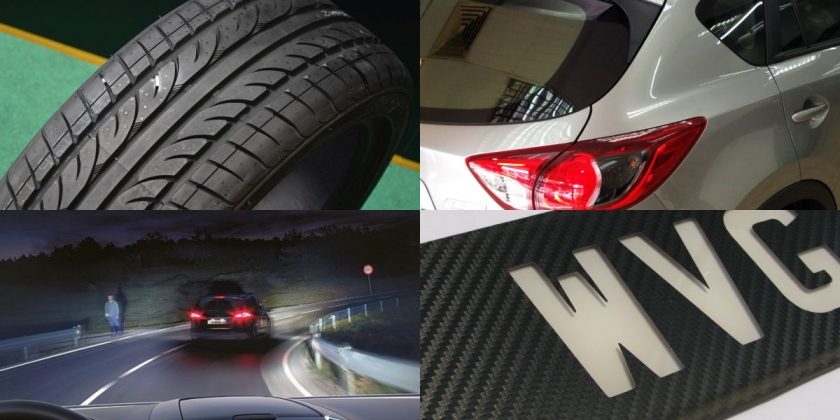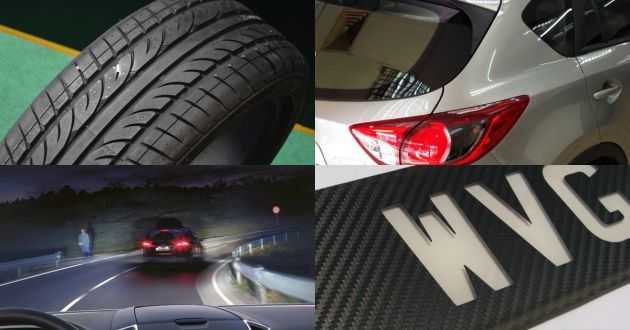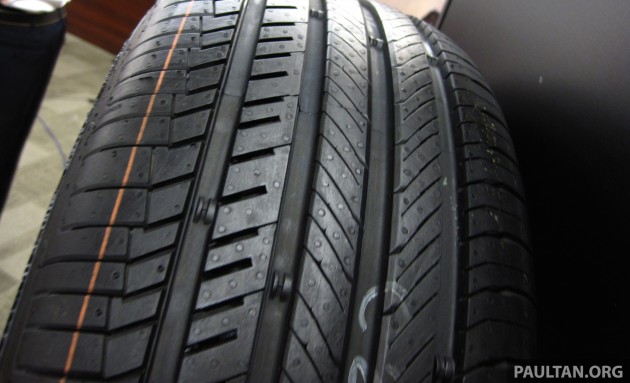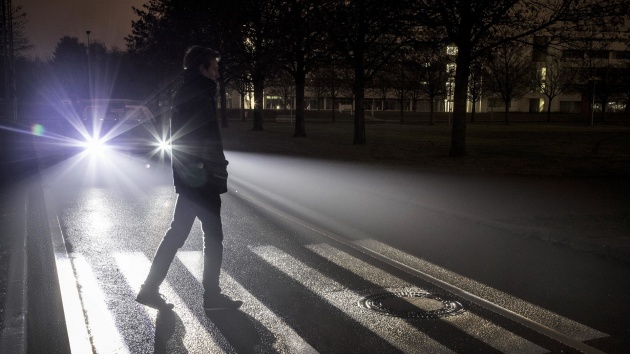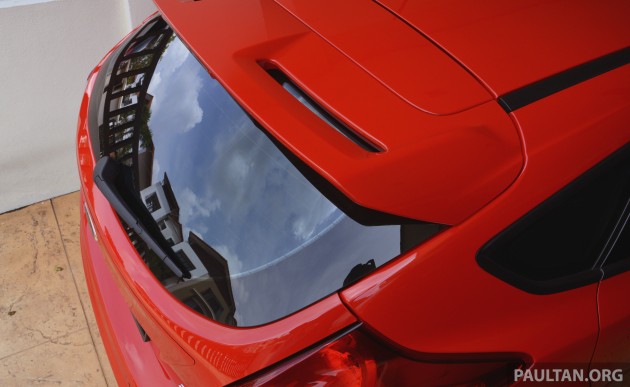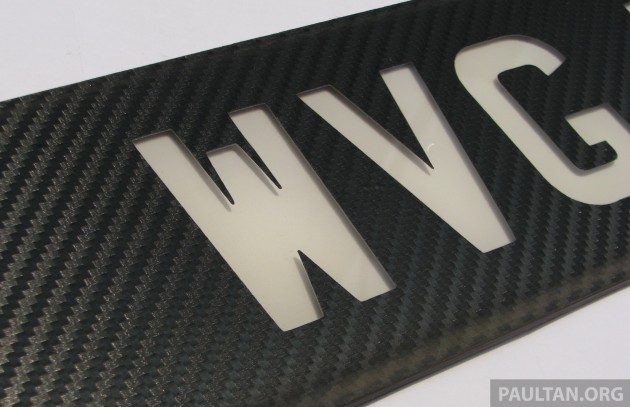Malaysians may love their cars, but they’re a funny bunch sometimes, unwilling to spend on the right things but willing to spend on the wrong ones. There’s also no shortage of people who take the high-road approach that it can be done, even if it really can’t.
This cavalier attitude can be seen everywhere, from how tyres – which are a crucial element of a vehicle – are viewed to an absolute need to shine in everyone’s eyes, not just figuratively, but literally. Needing to get this off our chest, we take a look at five things Malaysian drivers do a lot, but really shouldn’t.
Do you agree with our views on these? Share your thoughts in the comments section once you’re done reading – we’d love to hear your views on the topic. With that, on with the rant.
Buy cheap/used tyres
This is so common among Malaysian drivers, even on premium cars, often seen with upsized wheels but with HiFly, Yatone, Aosen, Farroad, FullRun or Triangle (yes that’s an actual tyre brand) rubbers.
Please stop doing so. When it comes to tyres, always go for the name brands – they are far safer and more reliable. Always remember, you get what you pay for, and with those four black donuts being the only things connecting your entire car to the road, don’t skimp on them.
Same goes with used tyres. It’s so common to see used tyres being sold in local car groups, with descriptions like “80% thread,” “like new” and “banyak bunga lagi” etc. Some of them may be of reputable brands too, often OEM tyres. So, good brand, can right? No.
Used tyres are generally not recommended. Once the tyres have been through use, or heat cycles, their expiry dates are accelerated. While they may look perfectly usable, there’s a big chance they’re no longer safe. This is also the case with reconditioned vehicles. The time spent sitting in storage, or worse, a lengthy shipment from other markets like Japan, UK, etc, will have hardened the rubber on these cars.
This is not to be confused with being given “old tyres” at tyre shops. Unused tyres can sit for years in the shops and be perfectly usable. It’s only a problem when it has gone through some use/heat cycles. It’s like food/drink items – they may sit on supermarket shelves for months and be perfectly fine, but as soon as they’re opened, you have to consume it within a short period of time.
As such, the advice is this – avoid used tyres and get new ones, and from reputable brands. Don’t try to be cheap with tyres la. They can bite back. Or rather, they won’t, when you need them to.
HID headlight conversions
Yes, fancy “white” LED or HID headlights on modern cars are far brighter, clearer, with longer throw compared to older “yellow” halogen lights. But you can’t simply change up your halogen headlights to HIDs or LEDs. That’s strictly illegal here in Malaysia.
The worry is that those lights are far too bright, and when installed in older complex surface reflector bowls meant for halogen units, can be set too high, blinding other road users. In some cases, the light throw of a dipped beam may be as high/bright as a full beam. That’s a menace to other drivers, and is rightfully illegal.
Some may argue that properly done, it’s safe. There are proper headlight conversions that use custom projector lenses and levellers to avoid being blinding. While that is a fair argument, it is still illegal and punishable by law as the road transport department (JPJ) has put a blanket ban on all headlight conversions. Just don’t do it.
Legally, you may use better, brighter halogen bulbs for better light performance. Major brands such as Osram and Philips offer better performing halogen headlight bulb replacements that are safe and legal for use in Malaysia. Just don’t go any higher than 4,300 K and you’re safe.
“Smoked” light housings and blinking tail lamps
Now, we move on from making your lights too bright to limiting their luminance (can’t make up your mind, eh?). It’s a popular trend now to give your headlights and tail lamps a darker, “smoked” look using Plasti Dip, wrap or tint. Supposedly, they look better/cooler, more aggressive/sporty/garang, etc.
Now, darkening them to a certain extent is fine, but not to the point of seriously blocking light projection. We’ve seen both headlights and taillights that are far too dark on Malaysian roads. The ill effects of making your headlights too dim are obvious enough – you can’t see as well at night, so it’s dangerous.
Tail lamps that are treated to reduce their light output are just as bad. Your signal lamps or even brake lights may not appear bright/obvious enough to other road users. Rear lights are designed to inform other road users of your vehicle’s position and intent (braking or turning). Limiting that information is not a smart move.
There are a few more light-related infractions too: misuse of foglights (why, Vios drivers, why?), turning on hazard lights in the rain, wiring the reverse lights to turn on when you brake and of course, blinking taillights. The last one takes the cake for being extremely annoying and distracting to other motorists. No. Just no.
Dark window tint
This is a long-running issue among Malaysian car owners. Too hot, must use dark tint. Privacy issues, scared people steal SmartTag, looks better with dark tint, the reasons go on and on. The government going back and forth with this issue, plus the lack of proper enforcement (other than time-specific ops) don’t help the matter either.
But the fact remains, we have very strict and specific regulations on window tint in Malaysia, and going too dark (for the front half) is illegal. The chance of you being stopped/fined for it is rather low, yes, but why is it that so many Malaysians think it’s fine to break the law to begin with?
There are no excuses for this, of course. When you are picking a window tint, most shops clearly label the options that are JPJ-compliant, with the rest being illegal, obviously. And yet, people are actively choosing to install illegal films and better yet, have the cheek to complain if ever they get fined for it. We are better than this, Malaysians.
If it’s a matter of heat, darker tints are not necessarily better at blocking heat, as we’ve detailed before in our in-depth look at window film tint. For example, a range-topping, higher visible light transmission (VLT) film will have far better heat rejection and performance properties than cheaper offerings that have a darker shade. Judge nothing by its colour, certainly not window film tint.
Like tyres in point number one, it pays to get quality window tint to start with. Better performance, longer lasting, proper warranty, it really makes a big difference in the long run. And remember, always choose JPJ-compliant tints. Who are we to break the law, eh? VIPs?
Fancy number plates
Another age-old issue. The JPJ has very specific regulations on vehicle number plates, and yet, it’s fair to say that you can see more fancy plates out on Malaysian roads than legal, JPJ-standard ones. In fact, most new cars drive out of the showrooms already fitted with illegal fancy plates.
Now, the term “fancy plates” in Malaysia isn’t at all like personalised or vanity plates in other countries. It means any number plate that does not conform to the JPJ’s exact specifications, which covers everything from the size, font and even spacing of the letters and numbers. Non-standard fonts (including stylised and italicised letters), multi-layer “crystal” finishes, carbon fibre backboards – they’re all illegal.
So too are European Union-styled plates (last we looked, we weren’t part of it) and combinations of letters and numbers that are creatively positioned to make out certain names or words: NAJ 113, MAR 14 and PLA 4804 reg numbers are all legal, but not when they’re stylised to read like NAJIB, MARIA and PLAYBOY. And yes, using logos in place of letters is illegal too, BMW M car owners.
The regulations are there for a reason – it’s to standardise and maximise the legibility of all vehicle number plates on the road. Our neighbours Singapore and Indonesia both have standardised stamped metal plates, though it has to be said the former’s execution looks far better than the latter’s.
There has been plenty of talk of having “standardised number plates” in Malaysia. Electronic e-plates with RFID identification (with the possibility of it replacing the road tax stickers) have been discussed as early as 2007, but nothing has progressed on that front yet, so here we are.
Of course, any form of standardised production and distribution will come with many question such as “so, which lucky or highly connected company will get the contract?” but we believe in this case, the end will justify the means.
Related Cars for Sale on
Source: Read Full Article
